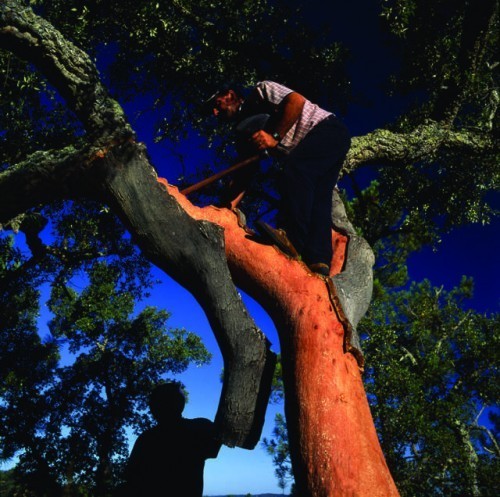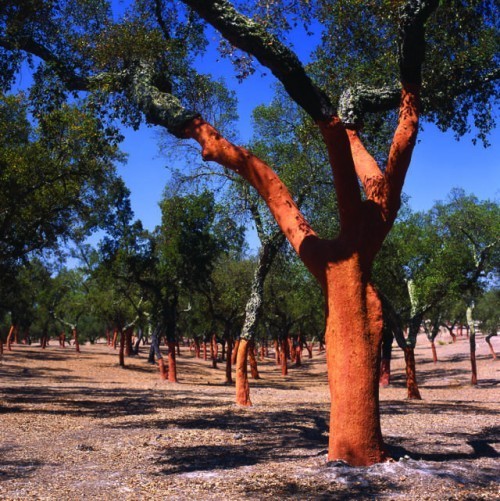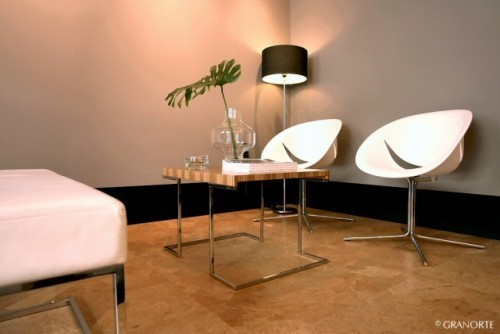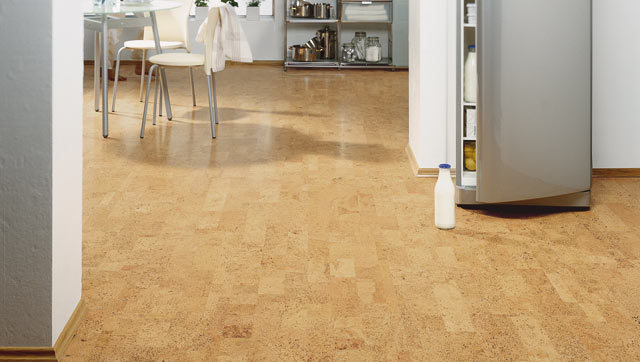Your Carpet, Real Wood, Laminate, Vinyl Click & Karndean Specialist
Categories DESIGNER
DESIGNER
CORK FLOORING by GranorteClick Together Cork Flooring by Granorte. Hardwearing clear lacquered finish on the decorative cork and a sound insulating cork base layer |
CORK WALL TILES by GranorteCork Decodalle Wall Tiles by Granorte. Clear parawax coating finish on the decorative cork veneer and a sound insulating cork backing |
LEATHER FLOORING by GranorteClick Together Leather Flooring by Granorte. Hardwearing clear lacquered finish on the leather and a sound insulating cork base layer |
DESIGNER CORK, LEATHER FLOORING & WALL CLADDING
About Cork - Cork is the outer bark of the cork oak tree, Quercus Suber L, which grows mainly in the Mediterranean region of the world. The bark is a vegetal tissue composed of an agglomeration of dead cells filled with air and lined with alternating layers of cellulose and suberin. The use of cork as a raw material dates back to the Phoenician and Greek times. Because of its use as wine bottle stoppers, cork began to be known all over the world. In fact, it is the only material that manages to make a perfect sealing during the ageing of the wine. Today, cork represents for Portugal a valuable resource being one of the most important exporting products.
Cork Oak - Cork oak forests cover approximately 2.5 million hectares primarily in seven countries: Portugal, Algeria, Spain, Morocco, France, Italy and Tunisia. This tree has a life span of about 250 years. Each cork tree must be 20 to 25 years old before it can provide its first harvest of cork bark called "virgin". This type of cork has a hard and irregular structure. After extracting the virgin cork a new layer of cork starts generating. A typical tree produces several hundred kilograms of cork at each harvesting and will survive for many generations. The cork harvesting is made in a sustainable manner and does not harm the tree in any way.
Cork production is assured with new plantations every year. Trees are never cut down or removed without strong government intervention, which prohibits this activity. Portugal, which produces more than 50% of the world's cork, has been particularly careful with this resource. The first Portuguese regulations protecting cork oak trees date to 14th century. With the increasing concern for the environment, cork oak remains the only tree whose bark can regenerate itself after harvest leaving the tree unharmed. It is truly, a renewable, environmentally friendly resource. Furthermore, the cork oak tree has the remarkable capacity to retain carbon and a harvested cork tree fixates almost five times more carbon. This exceptional characteristic makes cork a naturally sustainable product and its use contributes to the preservation of a unique habitat in the world.


Environmental Importance - The cork oak forests are well-adapted to the semi-arid regions of southern Europe, preventing desertification and providing the perfect habitat for many animal and plant species, including some rare species in extinction. Preserving the cork oak forest areas, and the cork's economical viability, is essential to maintain the biodiversity, avoiding desertification and promoting regional social stability. The role of cork in preventing the global heating is significant. The cork bark of the tree regenerates itself after harvesting and it is known that a harvested cork tree absorbs 3 to 5 times more carbon. A recent study indicated that Portuguese cork forests can absorb 4,8 million tons of carbon each year and it is estimated that Mediterranean cork forests can absorb over 14 million tons of carbon per year. The cork industry itself is truly eco-efficient. All cork is used, not one gram of cork is wasted. Cork by-products, are used in different products (flooring, decorative items, automobile industry...), and recycling (post-industrial and post-consumer) is a common practice. Even cork dust is used to generate energy.












